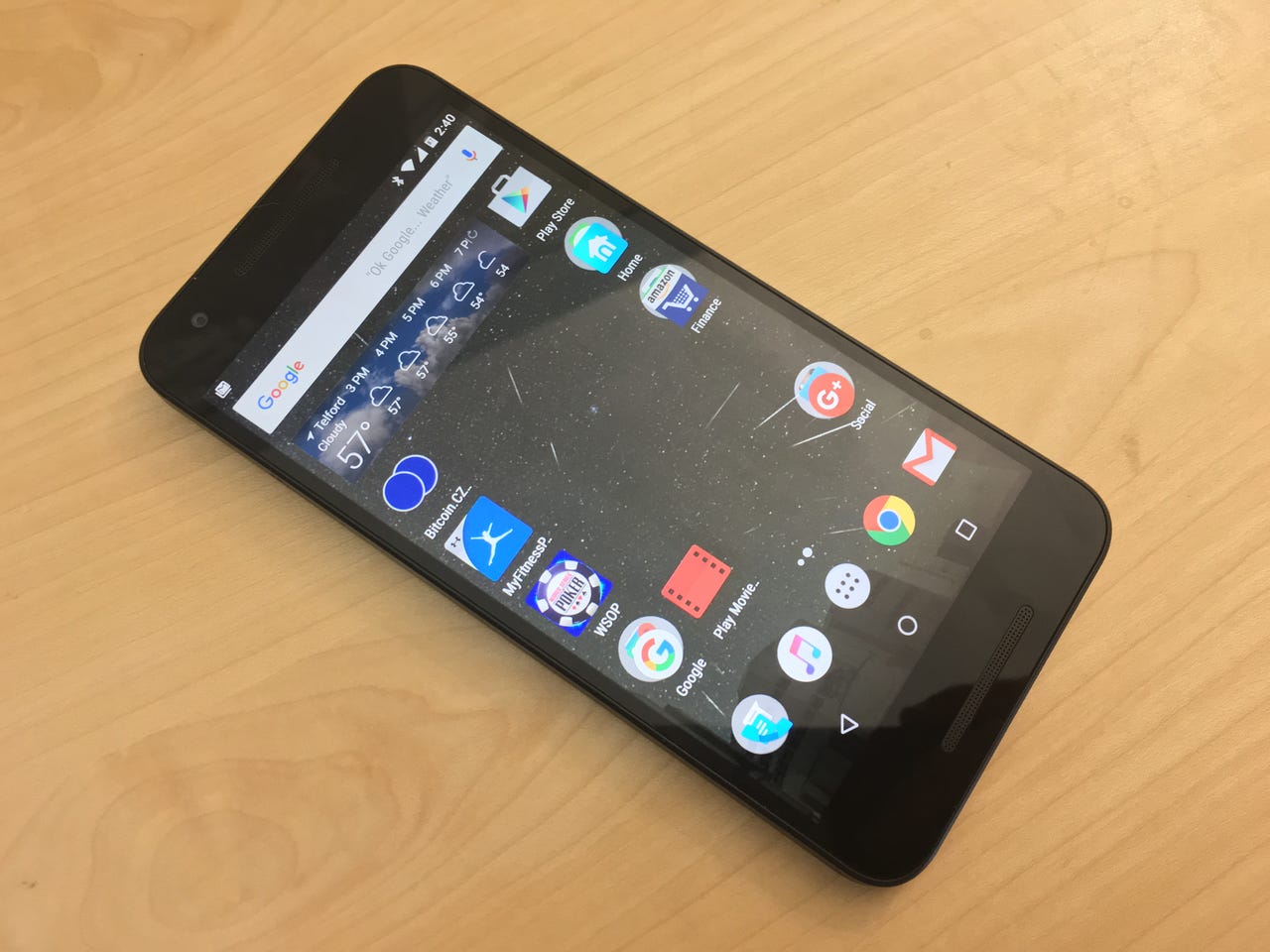One week with Google's Nexus 5X: Better than expected for less than $400


Among a sea of flagship handsets costing between $600 and nearly $1,000, how good of a phone can you get for under $400? If that phone is a Google Nexus 5x, the answer is pretty darn good.
I've typically bought either a new Nexus or Motorola handset each year since the original Nexus One in 2010. In 2013 and the following year, I chose a new Moto X, mainly because of the mostly pure Android experience, readily available software updates and add-on software features that make for a better experience.
But after using the 2015 Moto X Pure Edition, I felt it was too large for my tastes. I liked the 5.7-inch Quad HD screen when using the phone but less so when not using it and carrying it around.
Enter the Nexus 5X made by LG for Google that I bought last week.
It has a smaller 5.2-inch display that makes the phone noticeably smaller and lighter. The Moto X, for example, weights 179 grams and measures 153.9 millimeters by 76.2 millimeters. The Nexus 5X? It's far lighter at 136 grams and is 147 millimeters high by 72.6 millimeters wide.
Granted, much of the weight difference has to do with the smaller Nexus 5X case being made of all plastic; the Moto X has a metal case. But I don't feel that the Nexus phone is any less sturdy or solid.
I've also given up a bit in terms of performance and components: The Nexus 5x has just 2 GB of memory, no micro SD card slot - the only Nexus to have one was the original - comes with a maximum of 32 GB internal storage and uses a 1080p display.
About that screen: I'm hard pressed to tell that this isn't an AMOLED display. Colors are rich and natural, for example, on the IPS LCD and with 1080p resolution, everything is crisp on the display from all angles.
It turns out that none of "missing" more powerful factors are really impacting the experience, although I do wish Google had chosen 3 GB of memory for the Nexus 5.
And installing applications sometimes takes longer than I'd expect; I attribute that to the default hardware encryption being enabled. I'd rather have the security though, so I'm leaving device encryption on. Overall, the Nexus 5X has easily handled any apps or media I've thrown at it.
The camera "only" has a 12.3 megapixel sensor but with the larger image pixel size of 1.55µm paired with an f/2.0 aperture, even low light pictures look outstanding. Perhaps as good as those from my iPhone 6s.
That's the first time I've ever said that about any Nexus phone, as the picture taking capabilities often left me wanting more in the past. Note that the Nexus 6P uses the same image sensor.
I'm thrilled with the fingerprint sensor, which is called Nexus Imprint, on the back of the phone. In fact, I like it better than Apple's TouchID because it doesn't require a button press to wake the phone.
Naturally placing a finger on Nexus Imprint wakes the phone and authenticates you. It works quickly and reliably. And I often don't need it at all because a paired Android Wear device nearby keeps the device unlocked using Android's Smart Lock technology.
Some may be put off by the phone's USB-C port for charging. I can understand that. It's not a problem for me though; this is already my third device using USB-C: I've owned the latest MacBook and Chromebook Pixel which both use the same port.
And I feel comfortable that I can be out and about all day with the Nexus 5X as the battery has always had a little left in the tank at the end of a day.
The Nexus 5X ships with Android 6.0 and it already received one additional software update, plus the December security patches from Google. I also tweaked the software a bit by enabling the hidden System UI Tuner function: Tap and hold the Settings gear in Android's notification shade does this. From here you can add a battery percentage indicator and customize Android's status bar.
When my Nexus arrived last week, I reactivated my Project Fi SIM card: You can pause service and billing for up to three months at no charge. I did run into a hiccup when inserting the SIM, however.
No matter what I did, the Project Fi app wouldn't activate. It kept telling me I needed to replace the SIM. After some research, I found out that the original Project Fi SIM cards like I have don't quite work in the new Nexus phones. You need to order a new Fi SIM in that case, which is just a few clicks away and doesn't cost anything. Strangely, I still had working data and voice calling service with the old SIM while waiting for the new one.
Nexus 6P review:
You can certainly get a better but similar phone with the Nexus 6P, but again, I opted for a smaller device. And Motorola's Moto X for 2015 has some nice features as well, plus starts at $399.
In the end, my choice came down to a compromise between phone size and capabilities; similar to what I decided in 2013 when I bought the original Moto X with older processor at the time. And surprisingly, even if I had to pay the full $429 - or even a little more - for the Nexus 5X, I think I'd be just as happy with the purchase.
Google sells two models of the Nexus 5X: A 16 GB version for $379 and a 32 GB model for $429. During the holiday season, however, the company has reduced prices of both Nexus handsets by $50, so I got the 32 GB Nexus 5X for $379. I don't regret it for a second.